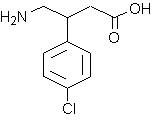TO THE EDITOR:
We read with great interest the article by Asplund et al ("3 Regimens for alcohol withdrawal and detoxification," J Fam Pract 2004; 53:545-554) about regimens in the treatment of alcohol withdrawal syndrome (AWS). The authors underline that inpatient treatment is significantly more costly than outpatient treatment, and they also correctly suggest that in an outpatient setting, most patients experience greater social support and the freedom to continue working or maintain their daily lives.
Regarding pharmacotherapy, the authors correctly state that benzodiazepines are the treatment of choice for AWS; they also suggest the anticonvulsants carbamazepine and valproic acid as alternatives. Moreover, they cite other types of medications such as alpha-adrenergic agonists, betablockers, and calcium channel blockers.
However, among the new drugs potentially useful in AWS treatment, the authors do not mention baclofen. Our group recently showed that baclofen, a GABA(B) receptor agonist, is able to suppress alcohol withdrawal symptoms, both in animals (1) and in humans. (2,3) It is also effective in reducing voluntary alcohol intake in alcohol-preferring rats, (3) and alcohol craving and intake in alcoholics. (4,5) Baclofen-treated alcoholic patients showed no serious side effects, and no patients reported craving for the drug or needed an increase in the dose. (2-5) These data have been recently replicated by Flannery and collegues. (6)
Moreover, regarding AWS treatment in an outpatient setting, we have shown that baclofen is able to rapidly suppress AWS symptoms--after the first administration--and so baclofen-treated patients reported a rapid improvement in well-being and resolution of psychological distress. Consequently, patients were able to return home in a short time; moreover, because all patients underwent therapy with baclofen in an outpatient setting, the cost of treatment was very low. (2)
We think baclofen is a promising drug in the clinical treatment of alcoholism, particularly given the possibility of using it singly instead of many different drugs, (2,3) and in maintaining long-term abstinence. (4,5) Although future investigations are needed to confirm the safety and efficacy of baclofen in the treatment of AWS, its use in treating alcohol-dependency merits further investigation. (7)
REFERENCES
(1.) Colombo G, Agabio R, Carai MAM, et al. Ability of baclofen in reducing alcohol intake and withdrawal severity: I. preclinical evidence. Alcohol Clin Exp Res 2000; 24:58-66.
(2.) Addolorato G, Caputo F, Capristo E, et al. Rapid suppression of alcohol withdrawal syndrome by baclofen. Am J Med 2002; 112:226-229.
(3.) Addolorato G, Leggio L, Abenavoli L, et al. Suppression of alcohol delirium tremens by baclofen administration: a case report. Clin Neuropharmacol 2003; 26:258-262.
(4.) Addolorato G, Caputo F, Capristo E, Colombo G, Gessa GL, Gasbarrini G. Ability of Baclofen in reducing alcohol craving and intake: II. preliminary clinical evidence. Alcohol Clin Exp Res 2000; 24:67-71.
(5.) Addolorato G, Caputo F, Capristo E, et al. Baclofen efficacy in reducing alcohol craving and intake: a preliminary double-blind randomized controlled study. Alcohol Alcohol 2002; 37:504-508.
(6.) Flannery BA, Garbutt JC, Cody MW, et al. Baclofen for alcohol dependence: a preliminary open-label study. Alcohol Clin Exp Res (in press).
(7.) National Institute on Alcohol Abuse and Alcoholism. Neuroscience research and therapeutic targets. Alcohol Alert 2004; 61:1-6.
Giovanni Addolorato, MD, Lorenzo Leggio, MD, Ludovico Abenavoli, MD, Fabio Caputo, MD, and Giovanni Gasbarrini, MD, Institute of Internal Medicine, Catholic University of Rome, Italy. E-mail: g.addolorato@rm.unicatt.it.
COPYRIGHT 2005 Dowden Health Media, Inc.
COPYRIGHT 2005 Gale Group



